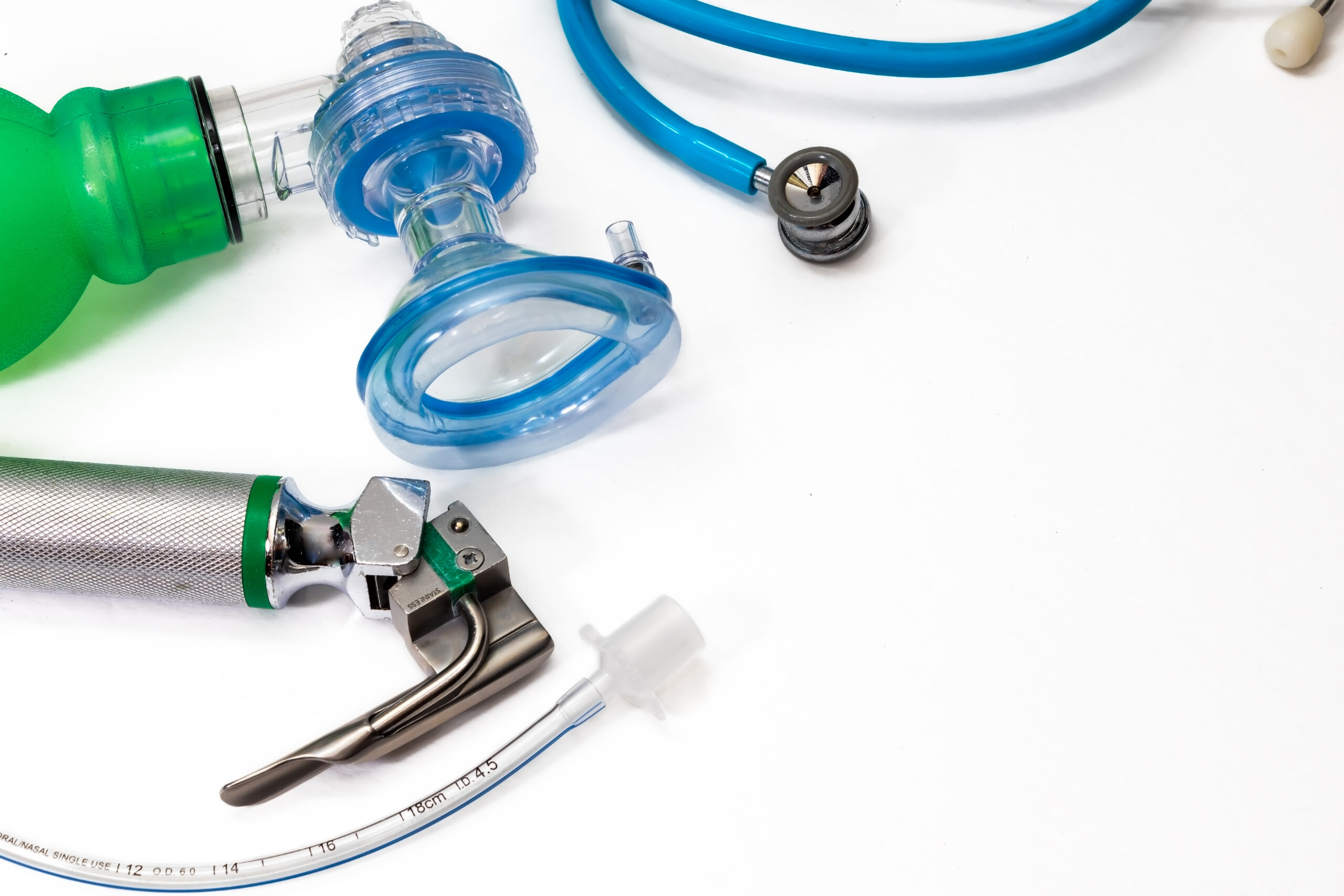Introduction
When a baby does not improve after the initial steps and 1 minute of PPV, the team must consider placing an alternative airway. There are two alternative airways used during neonatal resuscitation: the endotracheal tube (ET tube) and the laryngeal mask airway (LMA). When preparing to place an alternative airway, one team member should place the ECG monitor if not already in use.
Endotracheal tubes are constructed of a polyvinyl chloride material. During a procedure called intubation, an ET tube with an appropriate diameter for a newborn is advanced through the glottis into the trachea. A laryngoscope is necessary to perform an ET intubation.

Intubation equipment, including endotracheal tube and laryngoscope.
A laryngeal mask airway looks much like an endotracheal tube but has an inflatable cushion at the base of the tube. Laryngeal mask insertion is a blind procedure done without a laryngoscope. The LMA is pressed against the hard palate and slid down the back of the throat until resistance is felt. Resistance corresponds to the cushion pressing against the glottis. The cushion is then inflated to hold the airway in place and occlude the esophagus. When the LMA is in a good position, air flow through it diverts away from the esophagus to the trachea.
An LMA is an option for term babies who need PPV when ET intubation is not successful. The LMA is not used in preterm babies because the correct sizes for this patient population are not available.

Laryngeal mask for infants (size 1).